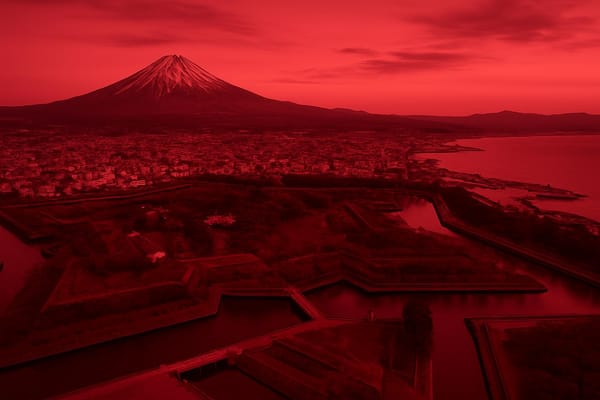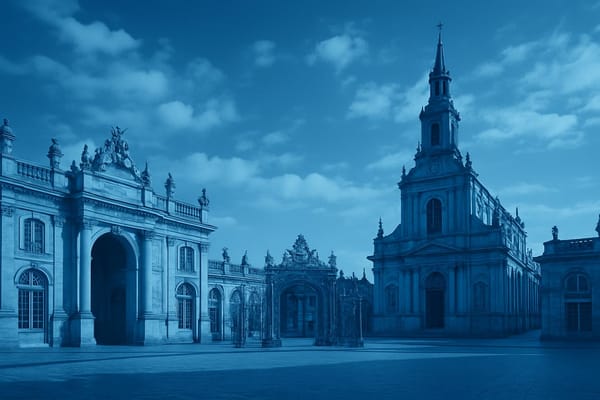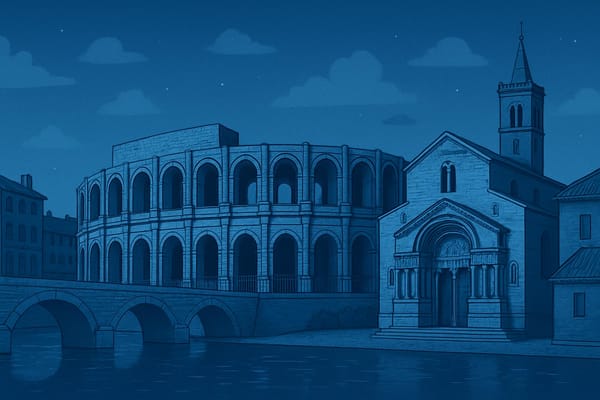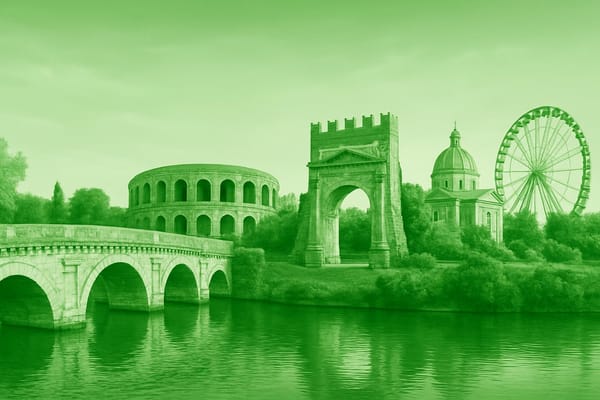Chicago
Discover iconic architecture, lakefront skyline, deep-dish pizza, blues & museums.
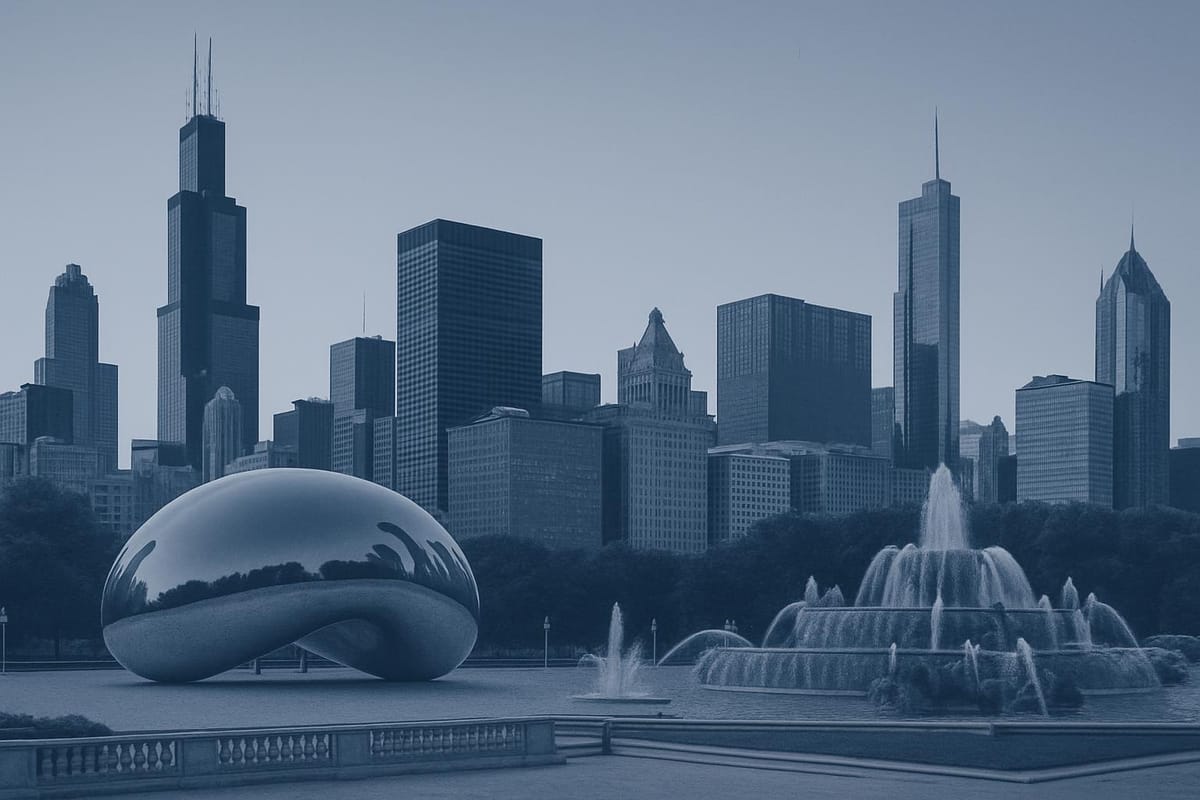
Important things to know about Chicago
Chicago, USA is a dynamic urban center on the shores of Lake Michigan, a Midwest metropolis where diverse communities, strong industrial roots and modern service sectors converge to shape a distinctive civic identity; the city's history as a transportation and manufacturing hub has evolved into a complex economy that includes finance, technology startups, higher education and global commerce, while its dense grid of neighborhoods fosters local culture, entrepreneurship and everyday life that vary block by block. Residents experience a full range of seasons - hot, humid summers and cold, snowy winters - which influence lifestyle patterns, outdoor recreation along the lakefront and city planning priorities such as transit accessibility and infrastructure resilience. Chicago’s urban fabric emphasizes a mix of housing types, commercial corridors and public spaces, with ongoing investment in transit-oriented development, bicycle networks and commuter rail that keep the city connected regionally and make transportation a defining urban feature. The population is multilingual and multicultural, reflected in community institutions, independent businesses, culinary innovation and a robust food scene that blends long-standing traditions with contemporary influences. Arts and music play a continuous role in daily life, contributing to a rich cultural milieu where creativity intersects with education at major universities and research centers, supporting workforce development and innovation. Whether considered from the perspective of business, academia, or everyday urban living, Chicago stands out as a resilient, multifaceted city whose scale, architecture, cultural depth and economic diversity continue to attract people, investment and ideas.
Sightseeing hot-spots in Chicago
Chicago’s sightseeing highlights blend world-class art, lakeside green space and unforgettable urban architecture. Start at Millennium Park to see the iconic Cloud Gate-often called “The Bean”-whose reflective surface frames the Chicago skyline and is a favorite for photographers. Nearby, the Crown Fountain and open-air concerts at the Jay Pritzker Pavilion make the park a lively hub year-round, while Grant Park’s proximity to Lake Michigan offers scenic strolls and skyline views that define sightseeing in Chicago.
For fans of design and history, the city’s architectural pedigree is on full display. The Architecture River Cruise provides one of the best ways to learn about the city’s 20th-century skyscrapers and innovative façades as the tour glides along the Chicago River. Thrill-seekers flock to the Willis Tower Skydeck and its glass Ledge, where the city unfolds beneath your feet, while cultural institutions like the Art Institute of Chicago and the museums clustered at Museum Campus deliver rich collections that satisfy any itinerary of top things to do in Chicago.
Beyond landmarks, Chicago’s neighborhoods add texture to the sightseeing experience. Sample deep-dish pizza and a classic Chicago-style hot dog, catch live blues in intimate clubs, or shop the Magnificent Mile for upscale finds. Sunset views from the Navy Pier or the Lakefront Trail are ideal for capturing the city’s glow, and seasonal festivals animate streets throughout the year. Whether you’re planning a first visit or refining your list of Chicago attractions, the mix of art, architecture, food and waterfront scenery makes the city a premier destination for travelers.
Hotels to enjoy in Chicago
Chicago is a city of dynamic neighborhoods and unforgettable skylines, and the selection of hotels in Chicago reflects that variety with options for every traveler. From sleek luxury stays along the lakefront to charming boutique properties tucked into historic districts, visitors can find accommodations that match their style and budget. Many Chicago hotels emphasize location - steps from Millennium Park, the Magnificent Mile, and the lively theater district - while others highlight rooftop bars, spa services, or panoramic skyline views ideal for photo-worthy moments. Business travelers appreciate downtown hotels with modern meeting spaces and fast Wi-Fi, while families look for larger rooms, on-site dining, and easy access to attractions such as the Navy Pier and museums along Museum Campus. Whether you seek a romantic getaway with riverwalk strolls or a convenient base for city exploration, Chicago’s hotel scene blends comfort, service, and memorable urban character.
Choosing the right Chicago hotel can elevate your entire trip, and savvy travelers consider more than just price; reviews, seasonal rates, loyalty programs, and included amenities like breakfast or parking all matter. Many properties offer curated experiences, from architectural tours to culinary packages that showcase Chicago’s famous food culture, including deep-dish pizza and gourmet dining on the Magnificent Mile. Late-season deals and off-peak promotions make it easier to enjoy high-end accommodations without the premium cost, while eco-conscious guests can find hotels that focus on sustainability and local community partnerships. With an eye toward location, amenities, and guest reviews, you can find the ideal Chicago hotel to match your itinerary and ensure a smooth, memorable stay in this vibrant American metropolis.
Restaurants to try in Chicago
Chicago is a city where culinary creativity meets Midwestern heart, and the Chicago restaurants scene reflects that blend with iconic eats and cutting-edge cuisine. From the neighborhoods of River North and the West Loop to the lakefront near Lake Michigan, diners can find everything from classic deep-dish pizza to Michelin-starred tasting menus. The diversity of dining options means you’ll encounter authentic ethnic restaurants, farm-to-table bistros, and bustling neighborhood favorites all within a short ride of each other. Food critics and visitors alike praise the Chicago food scene for its bold flavors, expert chefs, and the way historic institutions sit alongside new hotspots that push culinary boundaries.
If you’re searching for the best restaurants in Chicago, consider a mix of reservations for fine dining and adventurous walks through food-forward districts to discover hidden gems. The city’s brunch culture, late-night dining, and renowned Chicago dining staples like Italian beef, gourmet hot dogs, and seafood towers offer a full spectrum of tastes and price points for every traveler and local. Seasonal markets and food festivals keep menus fresh, while chef-driven kitchens emphasize local ingredients and sustainability. Whether you’re after upscale service, casual comfort food, or an unforgettable tasting menu, Chicago delivers memorable meals that make it a top destination for food lovers and those researching “where to eat in Chicago” and “best restaurants in Chicago” alike.
Best shopping stops in Chicago
Chicago’s retail scene is a must-see for anyone interested in Chicago shopping hotspots and unforgettable retail therapy. The iconic stretch known as the Magnificent Mile on Michigan Avenue delivers an impressive mix of luxury brands, flagship department stores, and flagship boutiques where architecture and retail collide. From window-shopping along tree-lined avenues to stepping into storied emporiums filled with designer goods, visitors discover why the Magnificent Mile is synonymous with upscale shopping in Chicago. Beyond that central corridor, Oak Street offers concentrated high-end boutiques and jewelers, while historic State Street anchors the city’s retail past with grand department store experiences. Together these areas create a layered shopping experience that satisfies searches for both luxury shopping in Chicago and classic American retail grandeur.
For a different flavor of retail, Chicago’s neighborhoods deliver eclectic and locally driven finds that appeal to shoppers seeking originality and value. Trend-forward Wicker Park and artistic Lincoln Park are packed with indie shops, vintage stores, and emerging local designers, perfect for those hunting unique boutiques and one-of-a-kind pieces. Art markets, pop-up shops, and specialty stores near the Riverwalk and around Navy Pier add seasonal variety and gift-worthy souvenirs, while curated home stores and gourmet food shops highlight Chicago’s design and culinary scenes. Whether searching for high-end labels, vintage finds, or handmade goods, the city’s diverse retail districts ensure that shopping in Chicago ranks high on any traveler’s itinerary and performs well for online searches seeking the best places to shop in the Windy City.
Nightlife highlights in Chicago
Chicago nightlife pulses with a mix of classic blues and jazz, modern EDM and soulful indie shows, making Chicago nightlife a top draw for music lovers and night owls. From intimate jazz rooms and legendary blues joints to sprawling nightclubs and craft cocktail lounges, the city offers something for every taste; those seeking skyline views head to rooftop bars along the lake, while aficionados of handcrafted drinks hunt down hidden speakeasies for inventive craft cocktails. Live performance venues keep the energy high, with local bands and touring acts delivering unforgettable nights, and the culinary scene supports the late hours with diverse late-night food options ranging from gourmet bites to classic Chicago comfort fare.
Neighborhoods like Wicker Park, Logan Square, River North and Downtown each bring a distinct flavor to after-dark adventures - Wicker Park's indie venues, River North's gallery-lined cocktail lounges and Logan Square's laid-back beer halls draw crowds across the city. The Riverwalk and Navy Pier offer scenic strolls before drinks, while comedy clubs and theater spaces guarantee laugh-filled evenings and vibrant cultural programming. Whether you're planning a weekend getaway or exploring local hotspots, Chicago's nightlife blends music, food, and atmosphere into an unforgettable urban experience that keeps visitors coming back for more.
Getting around in Chicago
Chicago is a major Midwest transportation hub where the airport and train situation offers travelers a range of efficient options: O'Hare International Airport and Midway International Airport handle vast numbers of domestic and international flights while maintaining strong ground access through the city's public transit network, and rail service into downtown is supported by the CTA (including the Blue Line direct to O'Hare) as well as commuter and intercity options like Metra and Amtrak; passengers benefit from frequent trains, clear signage, and coordinated schedules that make transfers between airports and trains relatively seamless for business and leisure travelers alike. Whether you're arriving at O'Hare seeking a quick ride to the Loop or departing from Midway with easy access to local rail lines, the combination of air and rail connectivity in Chicago helps reduce congestion, supports tourism and commuting, and provides multiple alternatives to driving, improving overall travel reliability. For anyone planning travel to or through Chicago, understanding the interplay between its airports, commuter rail, and intercity train routes can save time and stress and enhance the city's role as a vital national transit gateway.
Culture must-see's in Chicago
Chicago’s cultural scene is a vibrant tapestry where architecture and the arts converge along the Lake Michigan shoreline. From the soaring skyline that tells stories of modernist innovation to intimate neighborhood galleries, the city celebrates creative expression at every turn. Visitors and locals alike flock to world-renowned institutions such as the Art Institute of Chicago, enjoy cutting-edge exhibitions, and marvel at public art installations in Millennium Park. The interplay of historic landmarks and contemporary design makes Chicago a living museum of urban form, while music venues across the city sustain a rich lineage of blues and jazz that helped shape American sound. Theater lovers find a thriving scene with acclaimed productions, experimental companies, and a strong tradition of improv that feeds Broadway-caliber talent. This dynamic cultural mix keeps Chicago at the forefront of arts and entertainment, attracting cultural tourism and creative professionals.
Culinary culture is equally central to Chicago’s identity, where deep-dish pizza, chef-driven restaurants, and bustling food markets reflect the city’s diversity and innovation. Food and festivals act as social glue, bringing together neighborhoods from Pilsen to Hyde Park, each contributing distinct flavors, murals, and community traditions. Museums, music halls, and public programming offer year-round events that highlight history, contemporary issues, and performing arts, enhancing the city’s reputation for accessible cultural experiences. Whether exploring historic jazz clubs, attending a major exhibition, or savoring local specialties, visitors discover that Chicago culture is defined by creative resilience, multicultural heritage, and an enduring commitment to artistic excellence.
History of Chicago
Chicago’s story begins long before the city’s skyline defined the skyline of the Midwest, rooted in the lands of the Potawatomi and other Native peoples and transformed by European exploration and trade. The arrival of Jean Baptiste Point du Sable, often celebrated as Chicago’s first permanent non-native settler, set the stage for a trading post at the mouth of the Chicago River where water and land routes converged. Incorporated in 1837, Chicago surged ahead as a transportation hub with the opening of the Illinois and Michigan Canal and an expanding network of railroads that connected the agricultural heartland to global markets. The city’s rapid industrialization turned it into an industrial powerhouse, anchored by the Union Stock Yards and meatpacking plants, which brought workers, immigrants, and entrepreneurs from around the world. The Great Chicago Fire (1871) devastated large swaths of the city but also catalyzed one of the greatest rebuilding efforts in American history, giving rise to the Chicago School of architecture, pioneering uses of steel-frame construction, and the first generation of skyscrapers that redefined urban form. Symbolic events such as the World’s Columbian Exposition (1893) showcased Chicago’s recovery and ambition, attracting millions and cementing its reputation as a center of innovation, culture, and commerce.
Throughout the 20th century Chicago continued to evolve, shaped by waves of migration, economic shifts, and civic reinvention. The Great Migration brought hundreds of thousands of African Americans from the South, reshaping neighborhoods, culture, and politics while contributing to the city’s vibrant musical and artistic scenes. Industrial decline and the closing of the stockyards forced economic diversification, prompting investments in finance, education, healthcare, and technology. Landmark civic projects, from the reversal of the Chicago River to modern waterfront development along Lake Michigan, reflected persistent ambitions to solve urban challenges and create public space. Chicago’s political life, cultural institutions like the Art Institute, and architectural legacy - from historic skyscrapers to contemporary landmarks - continue to attract tourism and business, while neighborhoods maintain distinct identities forged by immigrant and working-class histories. Today, Chicago stands as a city of resilience and reinvention: a blend of historic grit, architectural innovation, and cultural dynamism that keeps the history of Chicago a living narrative, relevant to both scholars and visitors seeking to understand how American cities grow, adapt, and thrive.
